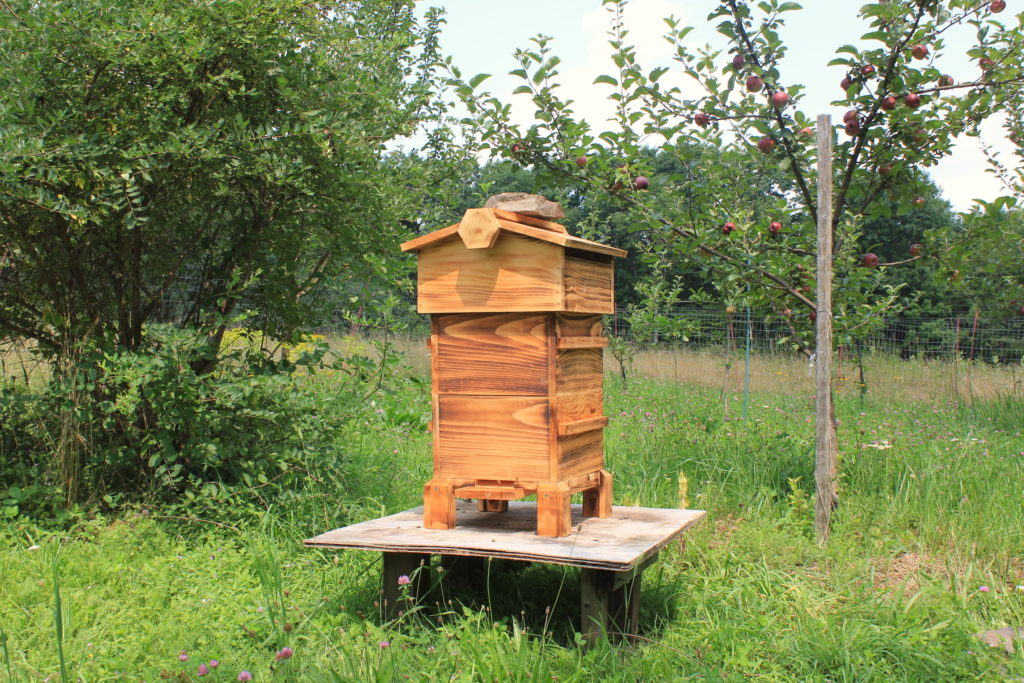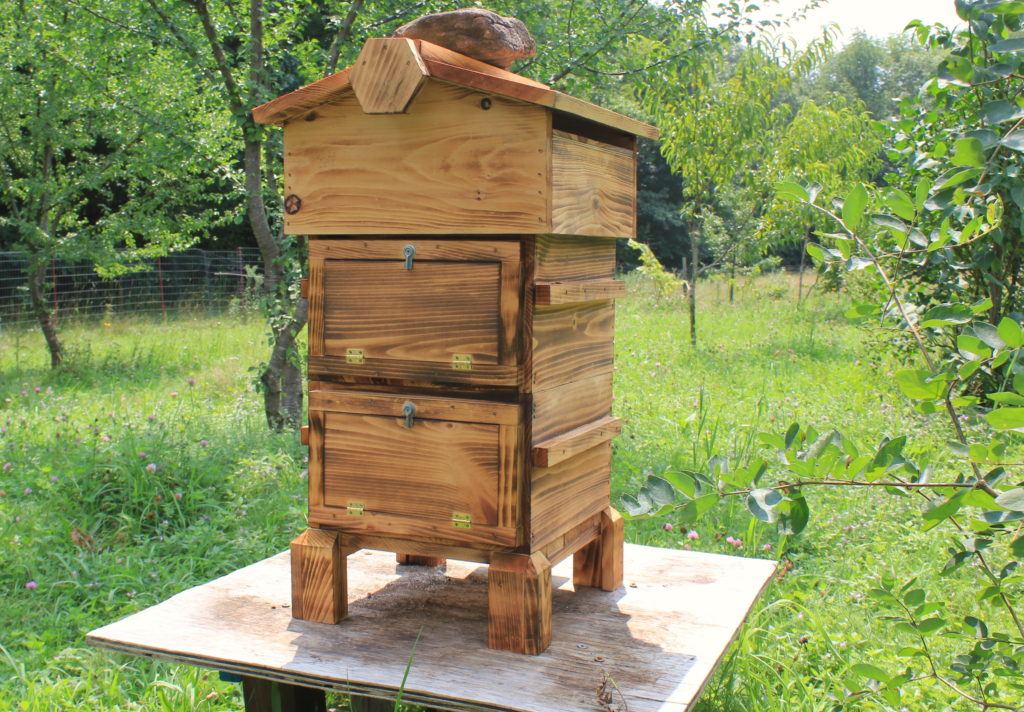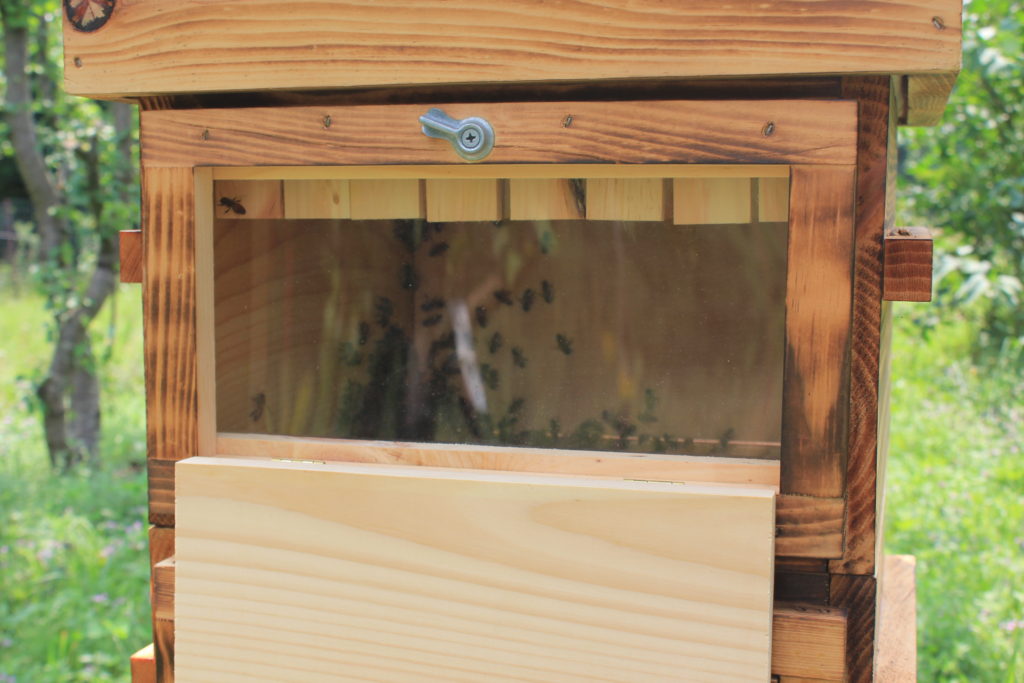Six weeks ago, we caught a swarm that was attached to a tree close to our first hive and transferred them to a new, temporary hive. A few days later, we moved them to this new Warre hive (pictured above) – a top bar hive – that comes with viewing windows at the back, so you can see what’s going on the hive without pulling out the frames (pictured bottom).
It’s not clear whether the swarm on the tree was a group of our own agitated bees in the first hive that had been robbed several times. It’s possible that they made a new queen and split. However, six weeks later, this new colony in the Warre hive is very calm, unlike the bees in our first hive, the occupants of which are occasionally defensive. (This can only be an advantage when a hungry bear comes to collect the honey later on in the year. A bear has already come within sniffing distance of the hive – he left evidence of his visit – but departed without trying to take anything despite the heady aroma of honey around the hive. The bees are docile when they’re foraging – now the Goldenrod is out – but are always prepared for another invasion. This trait may cycle out with each new wave of brood.)
The Warre hive (or People’s hive) was developed by a priest Emile Warré who was born in France in 1897. The hive is designed to be easy to use and allows the bees to operate most like they do in the wild. The boxes are small and square, mimicking a hollow tree as closely as possible without being round, which would take more work to produce. There are no full frames, only the top-bar part of the frame exists in the boxes, which allows the bees to build out the comb they way they see fit, which is downwards in a sort of flattened balloon shape. New empty boxes are added to the bottom of the hive, not the top, and old comb is not reused as it is cycled out of use, which makes the hive cleaner. The beekeeper who uses the Warre hive can leave the bees undisturbed for long periods of time only using the viewing panels to check their progress. Go to our Instagram page to see a short clip of the inside of the hive. This hive may not survive the winter, so will be moved to a greenhouse and insulated.


